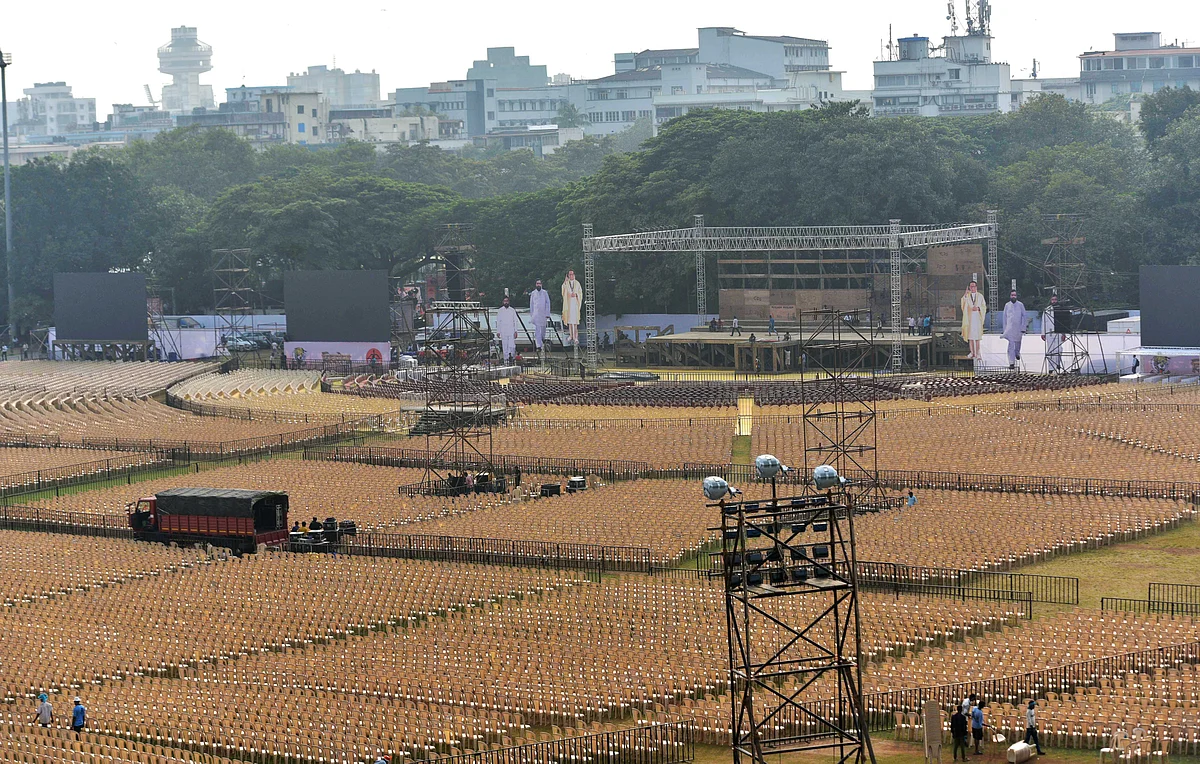Mumbai’s parks, once recreational spaces most of the time and occasionally spaces for political rallies, are now used more for rallies and less for recreation; especially so during the election campaigning.
These open spaces were given great importance during mills in Mumbai. This is because the labourers who would shed sweat and blood in the mills had a very cramped space to call their home. The space was at times shared with many other workers. The parks were respites that gave them air and light.
Neera Adarkar, an architect and urban planner known for her research work, points out, “Initially all the parks including Shivaji Park, Oval Maidan, Nare park were created for recreation for people, for good light and ventilation. It helped a lot as most people stayed in cramped chawls.”
The grounds or maidans soon became multi-purpose as many sport activities also took place. As people started migrating to Mumbai and the city grew leaps and bounds, many of these grounds saw a transformation in terms of its use.

Azad Maidan_Dussehra rally preparation | Salman Ansari
Politicians and social activists saw these grounds as an opportunity. The space was no longer a place to rest and bask in the sun. It was now used to revolt against the oppression or for politicians’ rallies and speeches.
P.K Das, architect-activist, has done notable work in the field of urban planning of the city. He explains how the city became the birthplace of some of the iconic movements in the history of Bombay, “Whether it is the Gandhiji’s marches, Dr Ambedkar’s movement, Dangis working class movement. Historically the city has been a birthplace of the movements influencing change.”
August Kranti Maidan is known for Gandhiji’s Quit India Movement. Irfan Engineer, an activist and director of Centre for Study of Society and Secularism narrates the event, “In 1942, the call for Quit India Movement was started in August Kranti Maidan. Gandhiji, Abdul Kalam Azad, Jawaharlal Nehru, came together at the maidan. Gandhiji gave a call to the Britishers, Angrezo Bharat Chodo (Britishers leave the country). That’s when all the fear from people’s heart was gone. It encouraged people. The movement spread like a wild fire across the nation. People everywhere resisted.”
Azad Maidan was used for political purposes was by the colonisers was to create a terror in the native people for rebelling against them. Aravind Ganachari, author and historian tells a chilling incident that gave Azad Maidan its name, “What is today known as Azad Maidan was also an open space and it was first time used to strike a terror in natives. There were three people who were suspected to be the rebels of 1867 were killed there. Their names are commemorated at Azad Maidan. They were blown away by the gun canons. So, from that time the Indians called it the area of Azad and thus it’s known as Azad Maidan.”
Azad Maidan gained political and social importance due to its location acting as a vantage point. “The government offices are still in the fort area. When mill workers had to take something jointly, they had a march they motivated or mobilised them in their own Girangaon but when there were collective morchas to the ministers then they would use the Cross maidan, Azad maidan. There used to be a big morcha at Azad maidan. For the Narmada Bachao Andolan there was a huge morcha,” Neera Adarkar says.
If you ever decide to stroll at Shivaji Park, you will see a large crowd scattered everywhere. People walking, exercising, catching up with friends, children playing in parks, school going kids doing gymnastics. The ground has been a common place for musicians and artists. However, the ground is also a place where most political rallies take place; not to mention the take over during Ambedkar Mahanirvan Din.
For Mumbai, public spaces have been maidans and used for multi-purpose says Harshvardhan Tanwar Co-founder at No Footprints. “For instance, during the death anniversary of Dr Babasaheb Ambedkar, thousands come to pay respect at Chaitya Bhoomi, using Shivaji Park as refuge for those days. Retreats that used to happen at esplanade during the time of the British now happen at Shivaji Park before the Republic Day parade. In fact, Balasaheb was cremated at Shivaji Park - so that his followers could mourn his loss together,” he adds.
Mills in Bombay have shut down but it used to be an integral part of the society. Mill workers have also found these spaces as a platform to raise their voice against the wrongdoings of the mill owners and the government.
Adarkar has done a notable work on the mills of Bombay. She has co written the book ‘The 100 years and 100 voices’. She talks about how the mill workers used these spaces for raising their voice. Charles Corea the architect had proposed a plan that led the mill area divided in three parts. One part for the open spaces, one part for the Mhada housing and one part for the mill owners. This was surreptitiously changed by the government. When there was a resistance after Charles Correa’s suggestions were changed, there were a lot of meetings against the mill owners and they were also held in this maidans. Even when there was a Naval Mutiny, people would gather at Nare Park.”
The open grounds of Bombay are shrinking. It has especially restricted the voice of people dissenting. Not just for recreation, but also to voice one’s disharmony.
The space is now shrinking, says Adarkar, “This is against the democratic values. During Samyukta Bharat Movement a lot of protests used to happen at Gwalior Tank maidan and at Nare Park. The movement had mill workers as well as the middle class Marathi people who would come together,” she concludes.











